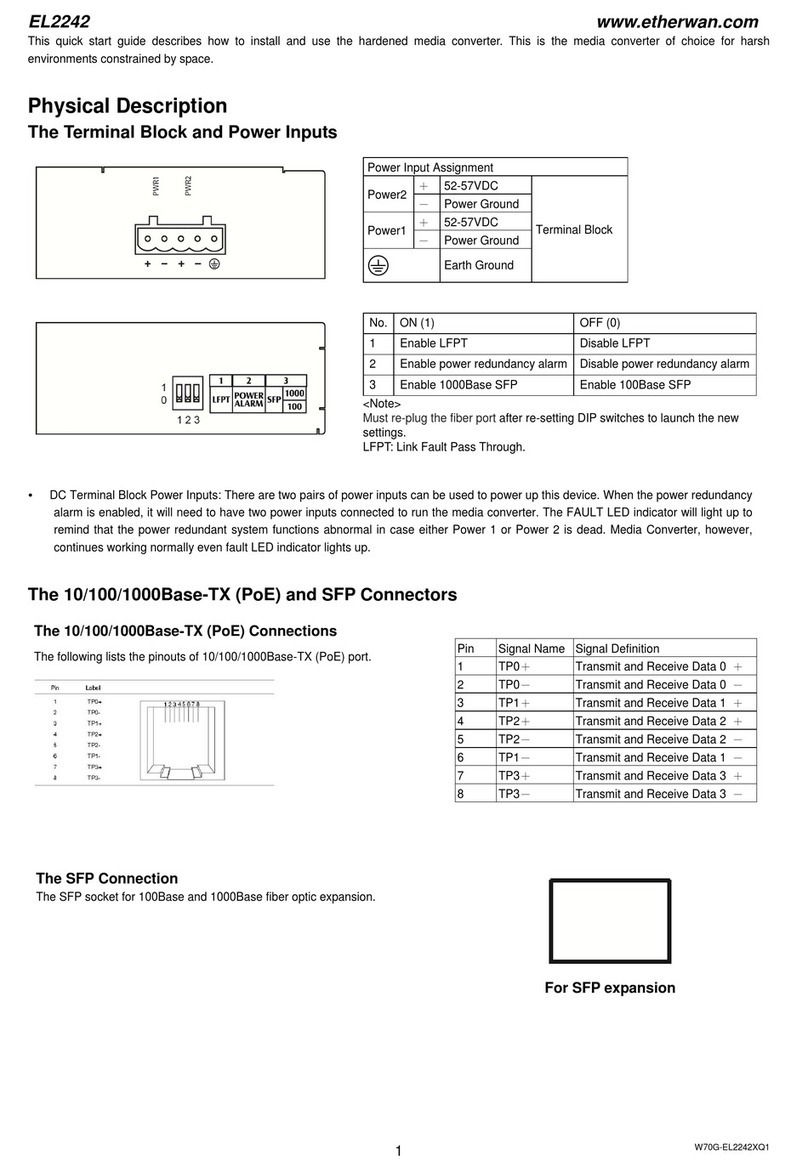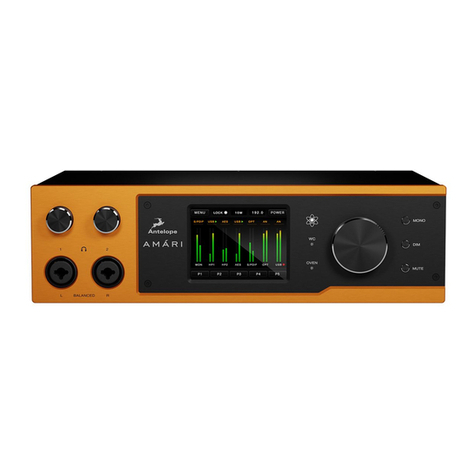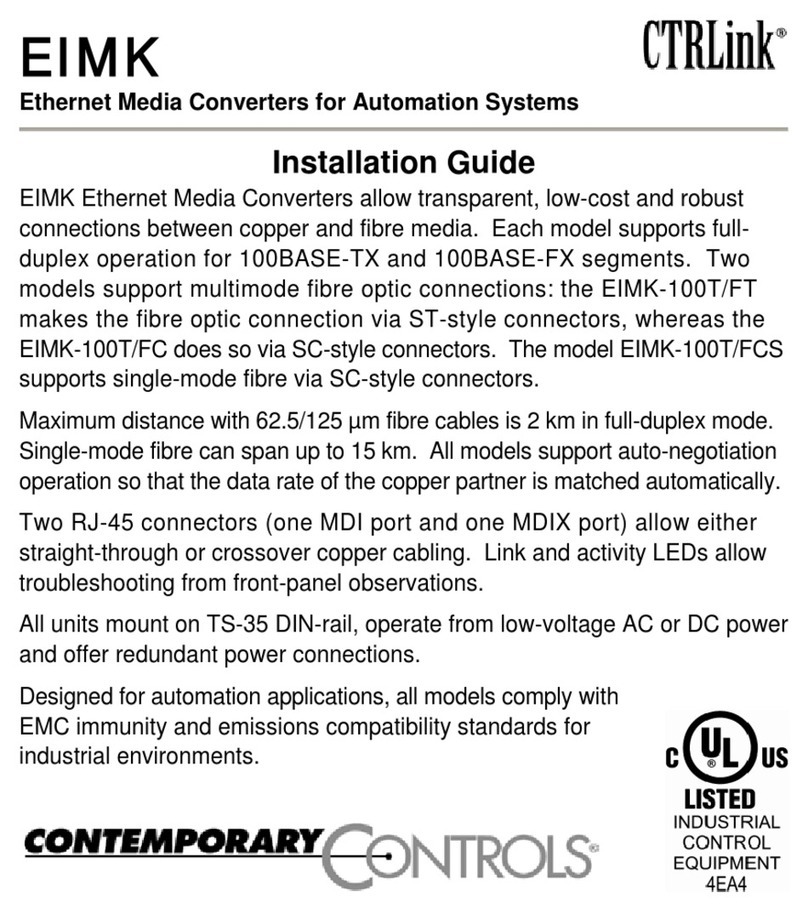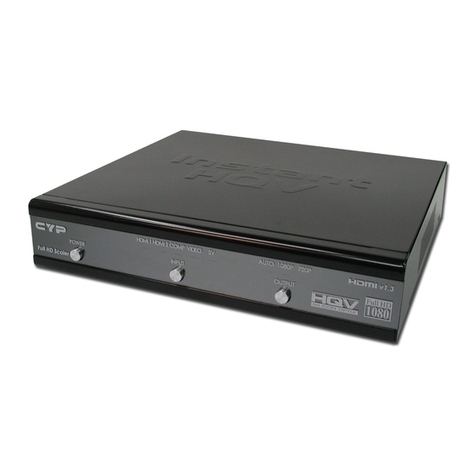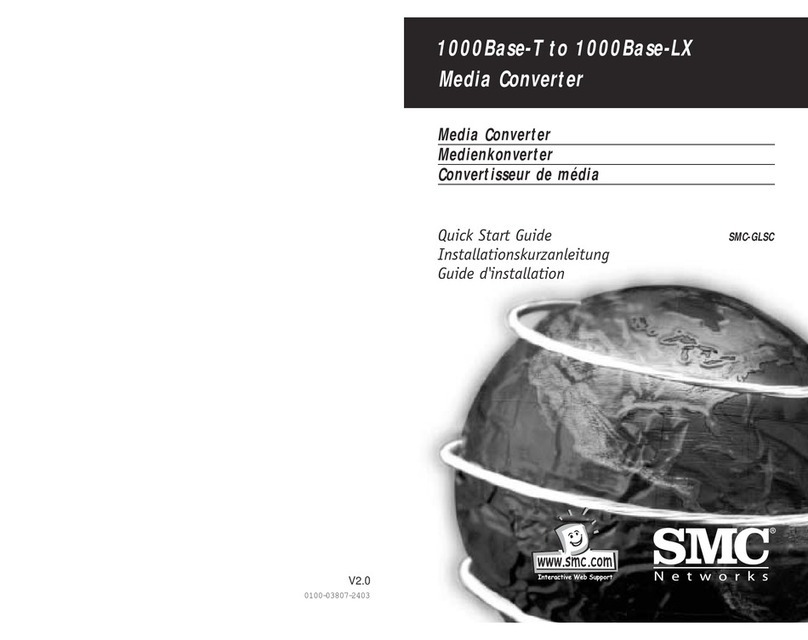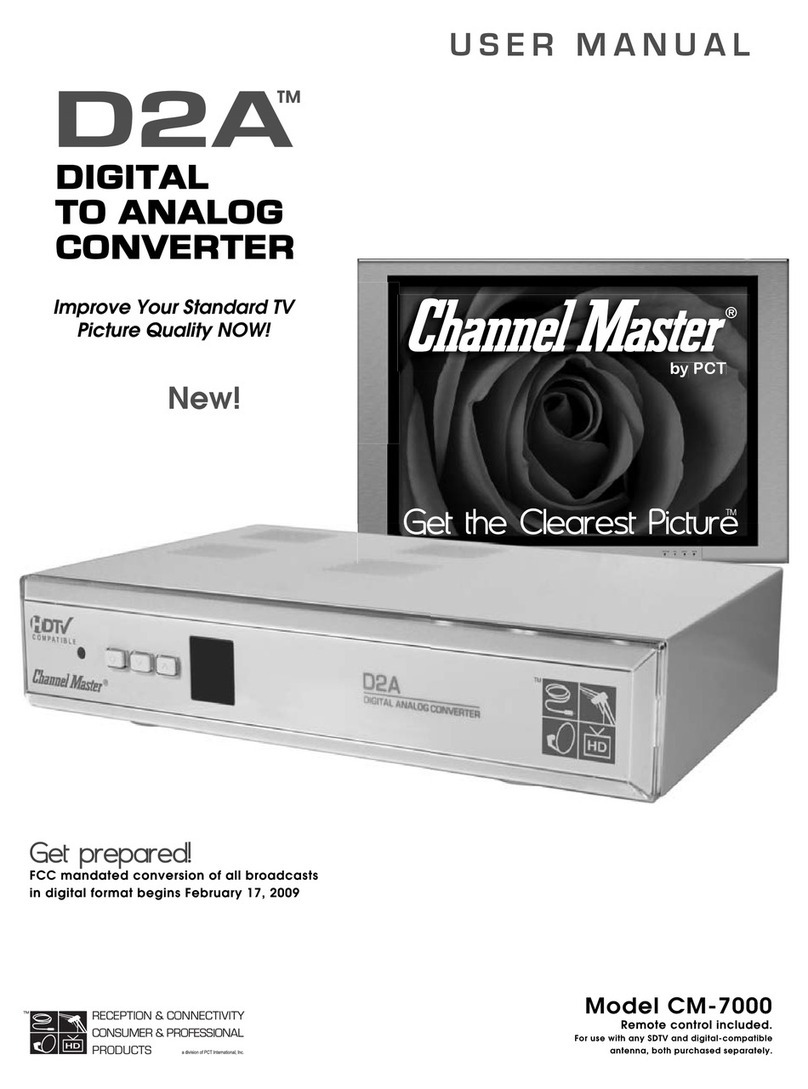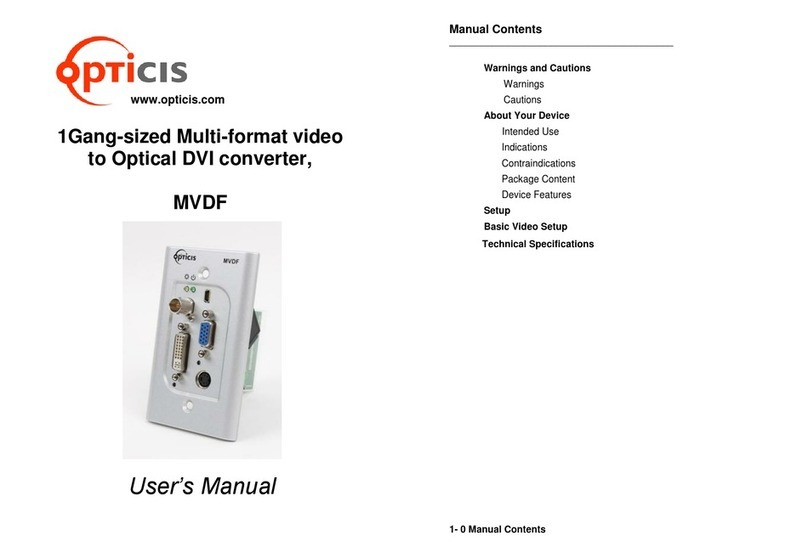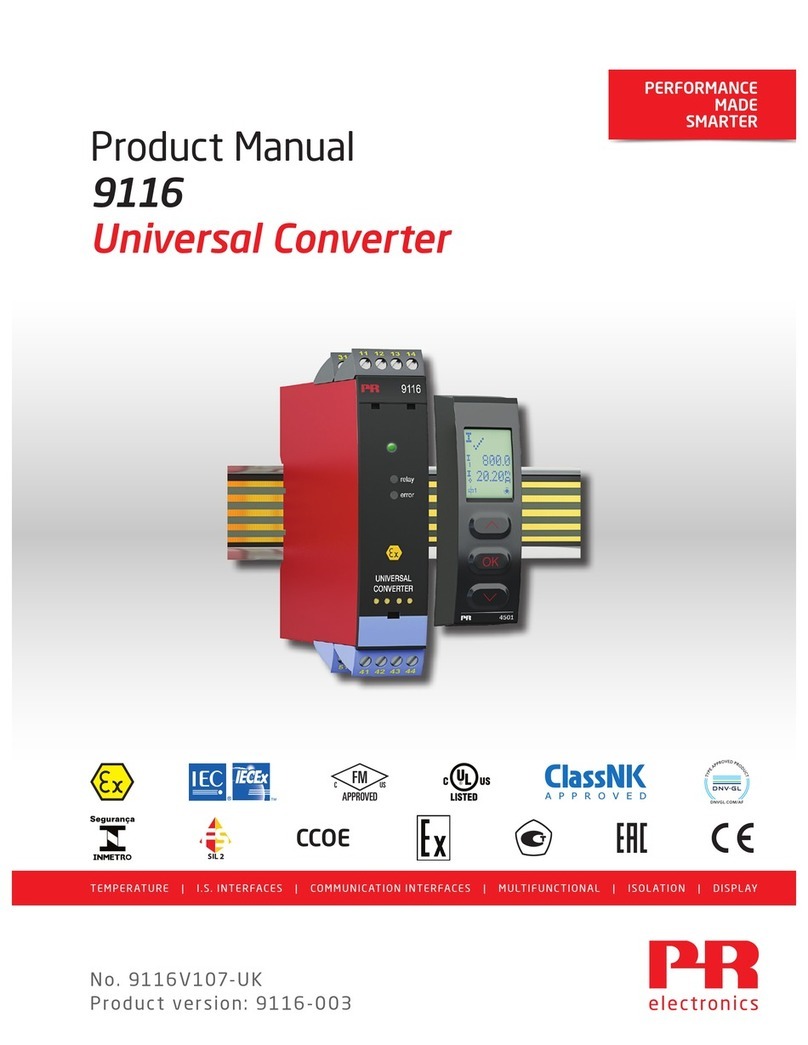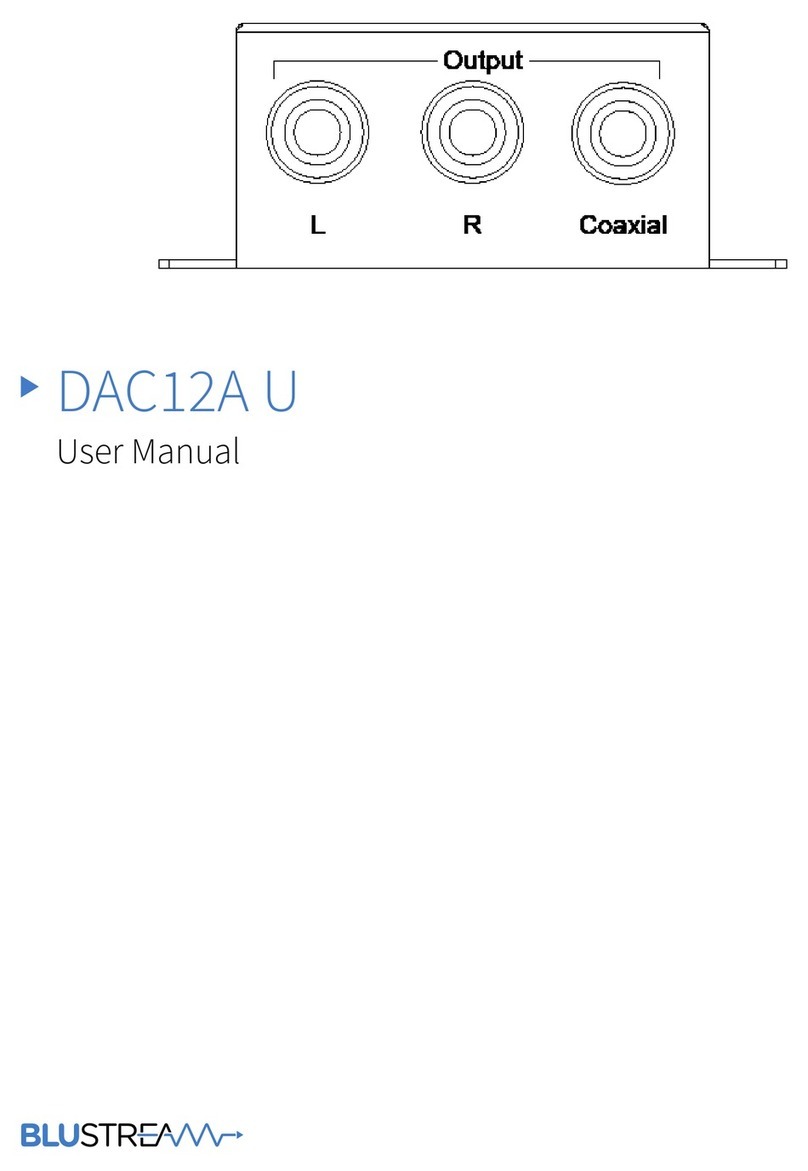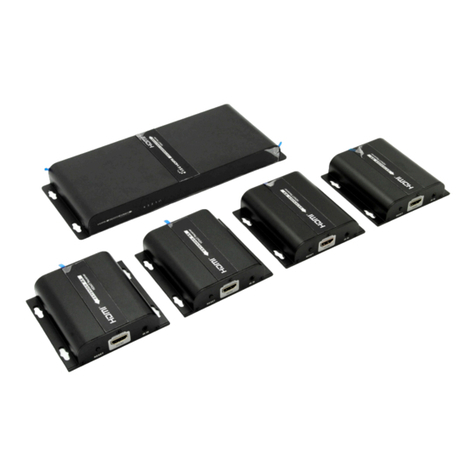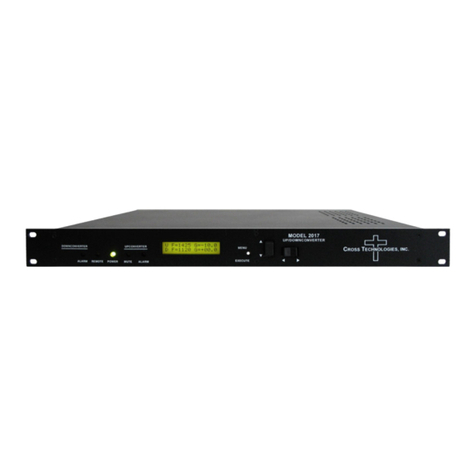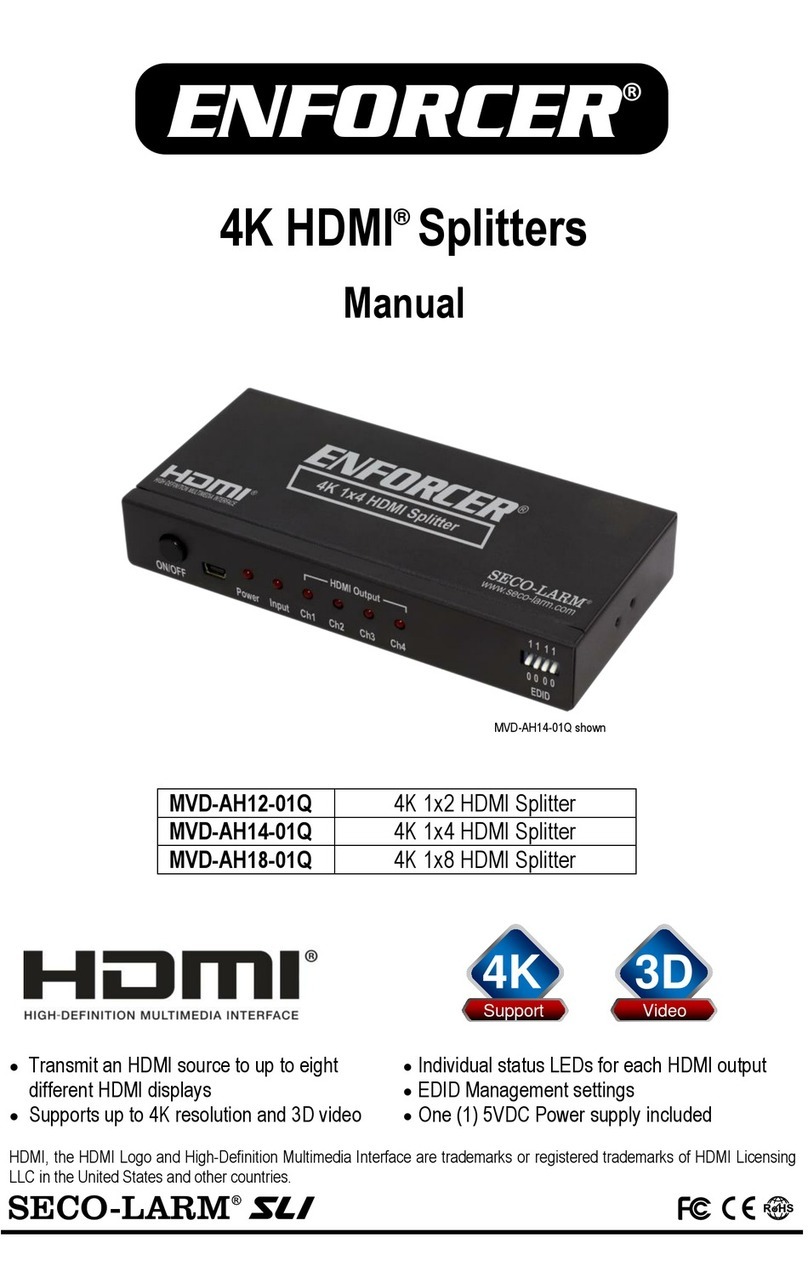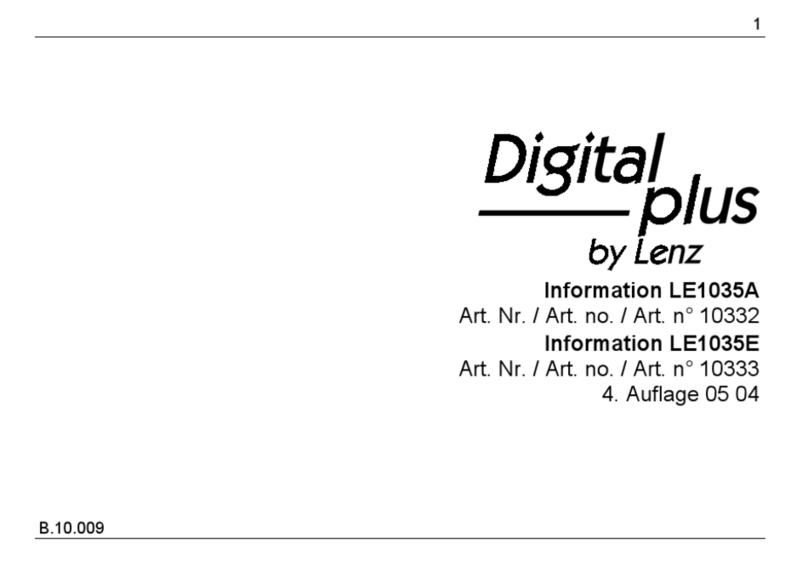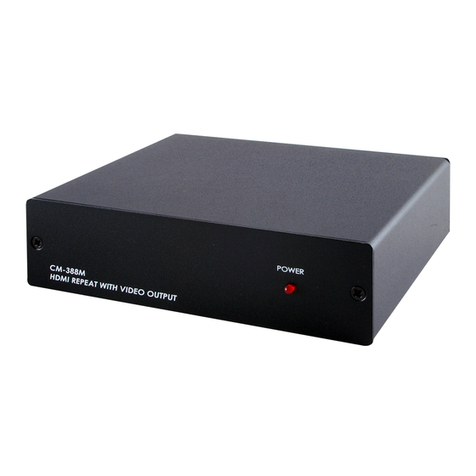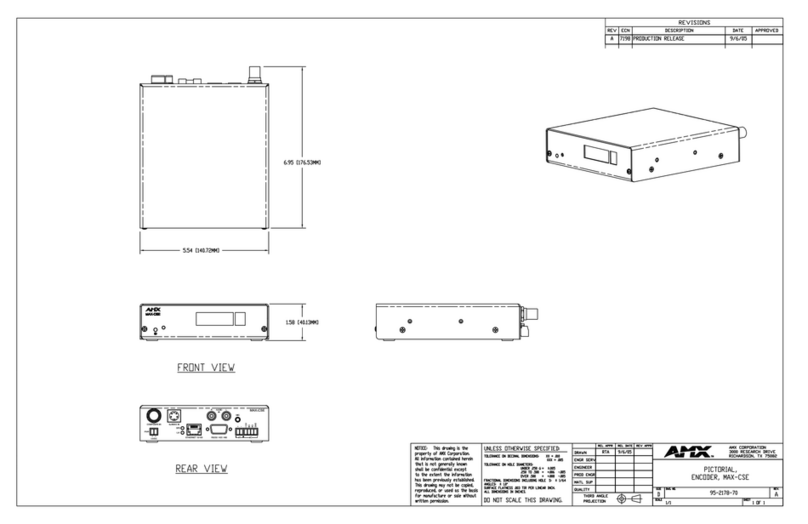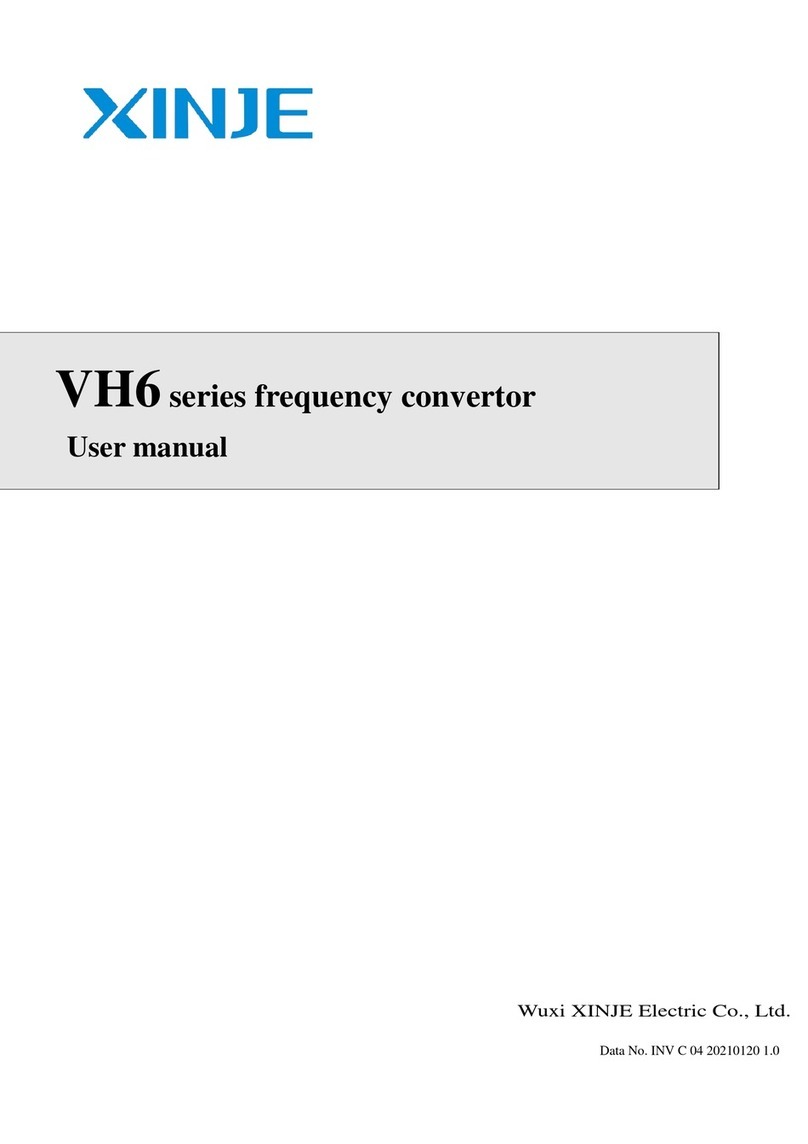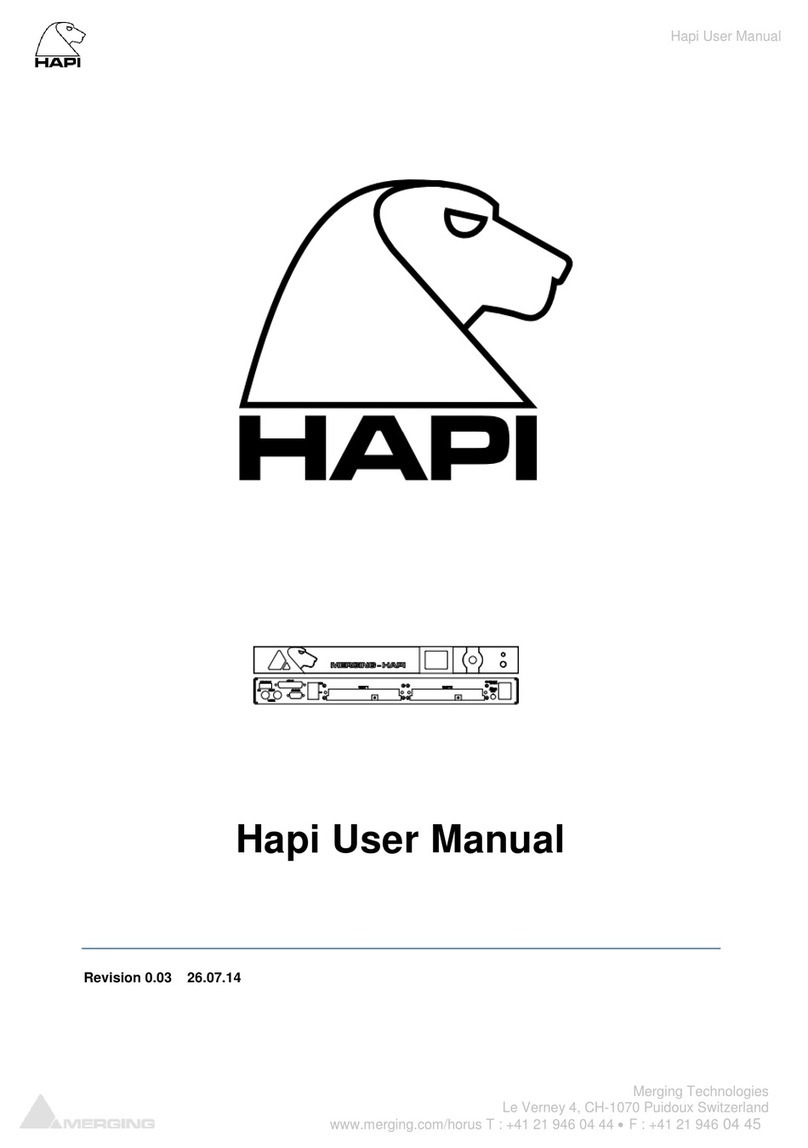Federal Signal Corporation SS2000 Plus User manual

Installation and Operation Manual
255400
Rev. C1 1216
Printed in U.S.A.
© Copyright 2016 Federal Signal Corporation
SS2000+ Encoder/Decoder

Limited Warranty
This product is subject to and covered by a limited warranty,
a copy of which can be found at www.fedsig.com/SSG-Warranty.
A copy of this limited warranty can also be obtained by written
request to Federal Signal Corporation, 2645 Federal Signal Drive,
call +1 708-534-3400.
This limited warranty is in lieu of all other warranties, express or
implied, contractual or statutory, including, but not limited to the
warranty of merchantability, warranty of tness for a particular
purpose and any warranty against failure of its essential purpose.
2645 Federal Signal Drive
University Park, Illinois 60484-3617
www.fedsig.com
Customer Support 800-548-7229 • +1 708 534-3400
Technical Support 800-524-3021 • +1 708 534-3400

3
Installation and Operation Manual
Contents
Safety Messages..................................................................................................................................... 7
General Description ............................................................................................................................... 9
Introduction ........................................................................................................................................ 9
Features ............................................................................................................................................. 9
Encoding ................................................................................................................................... 10
Modes of Operation................................................................................................................... 10
Standalone Two-way Operation ................................................................................................ 10
Computer Mode Operation........................................................................................................ 10
Automatic Logging ................................................................................................................... 10
Testing and Alignment ................................................................................................................11
Audio Inputs ...............................................................................................................................11
Serial Ports.................................................................................................................................11
Relay Outputs ............................................................................................................................11
Activation Buttons ......................................................................................................................11
Remote Activation Inputs ...........................................................................................................11
Transceiver Interface ................................................................................................................ 12
SS2000+ Encoder ............................................................................................................................ 12
Specications ....................................................................................................................................... 13
Connectors, Indicators, Controls and Jumpers ................................................................................ 15
Controller Board Connectors ............................................................................................................ 15
Remote Activation Inputs Board Connectors.................................................................................... 18
Indicators .......................................................................................................................................... 20
Controls ............................................................................................................................................ 21
Jumpers............................................................................................................................................ 22
Installation............................................................................................................................................. 23
Programming the SS2000+ .............................................................................................................. 23
Describing SSLoader+ Software ...................................................................................................... 24
Reading INI le from SS2000+.................................................................................................. 25

4
SS2000+ Encoder/Decoder
Using the SSLoader+ Software ........................................................................................................... 25
Using the General Conguration Tab ............................................................................................... 25
Digital Communications ............................................................................................................ 25
DTMF Communications ............................................................................................................ 26
Descriptions of Functions Reported by RTUs–Sent to Printer .................................................. 27
Comm Port Parameters ............................................................................................................ 27
General Parameters.................................................................................................................. 28
Relay Functions ........................................................................................................................ 29
RTU Faults ................................................................................................................................ 30
Network Settings ....................................................................................................................... 31
Using the Activation Function Tab .................................................................................................... 32
Activation Function.................................................................................................................... 32
SS2000+ Activation Button Numbering..................................................................................... 37
Uploading INI File to the SS2000+............................................................................................ 38
Connecting the Transceiver Interface............................................................................................... 38
Unbalanced Interface (TB2) ...................................................................................................... 38
Balanced Interface .................................................................................................................... 39
Setting the Jumpers.......................................................................................................................... 40
Internal Jumpers ....................................................................................................................... 40
External Jumpers ...................................................................................................................... 40
Setting the Levels ............................................................................................................................. 41
Setting the Transmit Levels....................................................................................................... 41
Setting the Receive Level ......................................................................................................... 42
Connecting the Relay Outputs (TB1)................................................................................................ 42
Connecting the Remote Activation Inputs (J1, J2, J3, J4) ................................................................ 42
Conguring the SS2000+ for operation over Ethernet...................................................................... 43
Setting Up a Virtual Com Port on a PC ............................................................................................ 43
Using the SS2000+ ............................................................................................................................... 46
Unlocking the System....................................................................................................................... 46
Automatic Logging............................................................................................................................ 46
Communication Mode....................................................................................................................... 47
Standalone Mode ...................................................................................................................... 47

5
Installation and Operation Manual
Computer Mode ........................................................................................................................ 49
Encoding........................................................................................................................................... 49
Manual Activation ............................................................................................................................. 51
Activating All Sites..................................................................................................................... 51
Activating a Zone ...................................................................................................................... 51
Activating an Individual Site ...................................................................................................... 52
Menu Selection................................................................................................................................. 53
Sending the Calibration Tone .................................................................................................... 53
Setting the Date and Time......................................................................................................... 54
Executing the Self Test.............................................................................................................. 54
Getting Service ..................................................................................................................................... 55
Figures
Figure 1 Desktop SS2000+ Front View ............................................................................................... 12
Figure 2 Back of the SS2000+ ............................................................................................................. 12
Figure 3 Drawing of back of SS2000+ ................................................................................................ 15
Figure 4 Back of SS2000+.................................................................................................................... 16
Figure 5 Back of SS2000+.................................................................................................................... 18
Figure 6 LEDs ....................................................................................................................................... 21
Figure 7 Controls on the SS2000+ ...................................................................................................... 22
Figure 9 Unbalanced Interface Connections (TB2) ........................................................................... 39
Figure 10 Balanced Interface Connections (TB2).............................................................................. 40

6
SS2000+ Encoder/Decoder
Tables
Table 1 Electrical .................................................................................................................................. 13
Table 2 Signaling Formats ................................................................................................................... 13
Table 3 Transceiver Interface Port ..................................................................................................... 13
Table 4 Local Mic Input ........................................................................................................................ 14
Table 5 External Mic Input ................................................................................................................... 14
Table 6 Line Input ................................................................................................................................. 14
Table 7 Ethernet Network Connection................................................................................................ 14
Table 8 Environmental ......................................................................................................................... 14
Table 9 Dimensions .............................................................................................................................. 14
Table 10 SSLoader+ Icons ................................................................................................................... 24

7
Safety Messages
Installation and Operation Manual
Safety Messages
It is important to follow all instructions shipped with this product. This device
is to be installed by trained personnel who are thoroughly familiar with the
country electric codes and will follow these guidelines as well as local codes.
Listed below are important safety instructions and precautions you should follow:
Important Notice
Federal Signal reserves the right to make changes to devices and specications detailed in
the manual at any time in order to improve reliability, function or design. The information
in this manual has been carefully checked and is believed to be accurate; however, no
responsibility is assumed for any inaccuracies.
Publications
Federal Signal recommends the following publications from the Federal Emergency
Management Agency for assistance with planning an outdoor warning system:
• The “Outdoor Warning Guide” (CPG 1-17)
• “Civil Preparedness, Principles of Warning” (CPG 1-14)
• FEMA-REP-1, Appendix 3 (Nuclear Plant Guideline)
• FEMA-REP-10 (Nuclear Plant Guideline).
Planning
• If suitable warning equipment is not selected, the installation site for the siren is
not selected properly or the siren is not installed properly, it may not produce the
intended optimum audible warning. Follow Federal Emergency Management Agency
(FEMA) recommendations.
• If sirens are not activated in a timely manner when an emergency condition
exists, they cannot provide the intended audible warning. It is imperative that
knowledgeable people, who are provided with the necessary information, are
available at all times to authorize the activation of the sirens.
• When sirens are used out of doors, people indoors may not be able to hear the
warning signals. Separate warning devices or procedures may be needed to
effectively warn people indoors.
• The sound output of sirens is capable of causing permanent hearing damage. To
prevent excessive exposure, carefully plan siren placement, post warnings, and
restrict access to areas near sirens.
• Activating the sirens may not result in people taking the desired actions if those to
be warned are not properly trained about the meaning of siren sounds. Siren users
should follow FEMA recommendations and instruct those to be warned of correct
actions to be taken.

8
Safety Messages
SS2000+ Encoder/Decoder
• After installation, service, or maintenance, test the siren system to conrm that it is
operating properly. Test the system regularly to conrm that it will be operational in
an emergency.
• If future service and operating personnel do not have these instructions to refer to,
the siren system may not provide the intended audible warning and service personnel
may be exposed to death, permanent hearing loss, or other bodily injury. File these
instructions in a safe place and refer to them periodically. Give a copy of these
instructions to new recruits and trainees. Also give a copy to anyone who is going to
service or repair the siren.
Installation and Service
• Electrocution or severe personal injury can occur when performing various
installation and service functions such as making electrical connections, drilling
holes, or lifting equipment. Therefore only experienced electricians should install
this product in accordance with national, state and any other electrical codes having
jurisdiction. Perform all work under the direction of the installation or service crew
safety foreman.
• The sound output of sirens is capable of causing permanent hearing damage. To
prevent excessive exposure, carefully plan siren placement, post warnings and
restrict access to areas near the sirens. Sirens may be operated from remote control
points. Whenever possible, disconnect all siren power including batteries before
working near the siren.
• After installation or service, test the siren system to conrm that it is operating
properly. Test the system regularly to conrm that it will be operational in an
emergency.
• If future service personnel do not have these warnings and all other instructions
shipped with the equipment to refer to, the siren system may not provide the intended
audible warning and service personnel may be exposed to death, permanent hearing
loss, or other bodily injury. File these instructions in a safe place and refer to them
periodically. Give a copy of these instructions to new recruits and trainees. Also, give
a copy to anyone who is going to service or repair the sirens.
Operation
Failure to understand the capabilities and limitations of your siren system could result in
permanent hearing loss, other serious injuries or death to persons too close to the sirens
when you activate them or to those you need to warn. Carefully read and thoroughly
understand all safety notices in this manual and all operations-related-items in all
instruction manuals shipped with equipment. Thoroughly discuss all contingency plans
with those responsible for warning people in your community, company, or jurisdiction.

9
General Description
Installation and Operation Manual
General Description
Introduction
This manual describes the features, specications, installation, and how to use the
SS2000+ encoder.
The SS2000+ encoder monitors and controls your siren system. The SS2000+ supports
one-way communication with the option of two-way communications using DTMF
or FSK encoding. Command sequences are programmable and stored in non-volatile
memory chips for retention, even when electrical power is disrupted.
For the most advanced systems, connect the SS2000+ to a PC running Federal Signal’s
Commander software. Commander and the SS2000+ can work together to monitor and
control your system, with the SS2000+ providing full redundancy in the event that your
PC is off line. Congure the SS2000+ using the SSLOADER+ software program.
Features
• Streams Wave les from PC
• Compatible with SE3000 Encoder Software and Commander Software
• Printer port for standalone operation
• Can send printer messages to serial printer
• Two serial ports: one for control and one for extra peripheral devices or control
• Multiple codes/functions stackable under each button including Relay Outputs
• Two-Tone, MSK Packet Digital, EAS and DTMF encode
• FLASH/Programming Port
• Twenty-four activation buttons on front panel
• I2C port for external relays or keyboard for additional activation buttons
• Twenty optically isolated remote activation inputs built in (activated by dry contact
closure)
• Status LEDs and LCD display
• Level Meter for Setting Receive Level
• Two Line Inputs for Transmission of External Audio Sources (3.5 mm)
• XLR Input for microphone, phantom power supply for amplied microphones
• External Mic Input VOX (which simulates push-to-talk through audio level)
• Three programmable Relay Outputs
• High or Low Impedance for radio interface
• Carrier Detect from Radio/Transceiver or VOX
• Selectable Carrier Detect Polarity

10
General Description
SS2000+ Encoder/Decoder
• Monitor Speaker to Monitor Incoming and Outgoing Trafc
• Powered from 12 to 30 Vdc, runs on standard 12 or 24 V backup power
Encoding
Program up to three codes under each activation input. There are sixty programmable
functions available. These codes can be Two-Tone, Single-Tone, EAS, DTMF, Federal
Signal Digital Codes (FSK) and activating the three Relay Outputs, or calling another
activation key. Send each activation code from one to three times.
Modes of Operation
You can set the SS2000+ in either standalone or computer mode. In either mode, any
poll requests or activation commands from Commander Software, updates the clock in
the SS2000+ to match the Commander Software time and date. In computer mode, all
reports, status, and activations are logged within the Commander Software.
The SS2000+ can also receive streamed audio and encode activations from Commander
Software or the SE3000 Software and transmit it out as audio.
Standalone Two-way Operation
Use the SS2000+ in standalone mode; that is, without a host computer application. When
in standalone mode, the SS2000+ does not function as a two-way radio modem for the
SE3000 Software or Commander Software applications.
In standalone mode, the SS2000+ acknowledges and prints incoming status reports and
alarms from remote devices. Acknowledgments conrm message receipt and keeps
remote devices from repeating transmissions.
The SS2000+ is congured with two lists of unit numbers: one for digital units and
one for DTMF units. Both types can exist in the same system. When a Report – All is
executed, the SS2000+ polls the active units in the digital list rst, logging each poll and
response. When complete, the SS2000+ polls the units in the DTMF list, logging each
poll and response. The DTMF status or alarm messages are converted to the same format
as the digital information. The incoming DTMF and digital messages are decoded and
displayed on the LCD.
Computer Mode Operation
The SS2000+ keypad and display are still operational in computer mode, but the
SS2000+ does not acknowledge incoming digital messages. It passes all messages to the
host computer application.
Automatic Logging
The SS2000+ displays all incoming and outgoing messages on its LCD display.
The SS2000+ prints all status reports on a line printer if the printer is enabled in the
conguration. If Com port 2 is congured for printer messages, the statuses and alarms
are sent there as well. The SS2000+ also logs each time it is powered up, all manual
encode activations, outgoing poll requests, and the results of each step in the self test
procedure.

11
General Description
Installation and Operation Manual
Testing and Alignment
The SS2000+ has a calibrate function and an LED bar graph to aid in setting receive and
transmit levels. It also incorporates a comprehensive built in test routine to test every
circuit of the unit. The internal monitor speaker allows the user to hear all incoming and
outgoing transmissions to aid in system setup and troubleshooting.
Audio Inputs
The SS2000+ has two line level inputs, each with its own PTT line, a local mic input with
PTT, and an XLR balanced input incorporating a VOX PTT for balanced or distant mics.
The XLR input can provide a ghost supply for amplied mics. Use amplied or non-
amplied microphone.
Serial Ports
The SS2000+ has two serial ports. Use COM1 for interfacing with Commander Software
or Encoder Software. Use COM2 to send printer messages or receive text messages to a
display or peripheral device. Also, use COM2 to interface with Commander Software,
Encoder Software, or an external radio modem.
Relay Outputs
The SS2000+ has three Relay Outputs that you can program to activate when an
activation button is pressed. Each relay has an off time and an on time. Alternatively,
congure each relay to activate when the unit has not been polled in 30 minutes, when an
RTU reports a fault, or when PTT or Carrier Detect are active.
Activation Buttons
Located on the front panel of the SS2000+ are twenty-four programmable activation
buttons that activates functions one through twenty-four.
Congure each activation function for Auto Prompt Send or Auto Send. Auto Prompt
Send prompts you to press the SEND button after an activation button has been pressed
before initiating the activation. Auto Send sends the code out when you press the
activation button without being prompted to press SEND. The same method is used with
Auto Prompt Send Auto Report and Auto Send Auto Report modes, which include and
automated system wide poll after activation. You can print each activation and status
reports to a printer.
Remote Activation Inputs
Located on the back of the SS2000+ are twenty external activation inputs that can be
driven by a contact closure. These inputs are optically isolated and activate buttons
one through twenty. Debounce time for remote inputs is 250 ms. An input held closed
for extended time will not generate multiple activations. These twenty external (rear
mount) inputs are factory set to activate activation inputs one through twenty. Modify the
jumpers on the internal PCB to allow the inputs to be used for additional functions. For
example, use the remote inputs as inputs twenty-one through forty or forty-one through
sixty. See “Remote Activation Inputs Board Connectors” on page 18.

12
General Description
SS2000+ Encoder/Decoder
Transceiver Interface
The transceiver interface features a balanced 600 ohms input and output (optional
10 K ohms) and can accept a wide range of transceiver types and levels. The transmit
audio from other encoding equipment can be interrupted during the transmissions of
the SS2000+ by the PTT relay. The unit also monitors if other equipment is currently
transmitting before attempting to transmit. Carrier detect can work with either polarity or
from a VOX.
SS2000+ Encoder
Figure 1 Desktop SS2000+ Front View
Figure 2 Back of the SS2000+
LCD
Display Keypad
Lock
Activation
Hotkeys

13
Specications
Installation and Operation Manual
Specications
Table 1 Electrical
D.C. Power Input Input Voltage 12-30 Vdc
Current Draw <300 mA Standby, <700 mA max
Table 2 Signaling Formats
MSK Digital encode/decode 1200 Baud
Decode Sensitivity </= 21 dB SINAD for highest modem tone
DTMF encode/decode 35 ms/5 ms-100 ms/100 ms timing
Two-Tone encode 282-3000 Hz,
Timing, 0.5 sec min to 8 sec max
Serial Ports
Protocol, RS232C 9600 Baud,N,8,1
FLASH Programming Port
For programming 9600 Baud,N,8,1
Printer Port
IEEE 1284 Parallel printer port
Table 3 Transceiver Interface Port
Receive Audio Input Audio Input Level
50-10,000 mVP-P for Low Z, 600 ohms
500-10,000 mVP-P for High Z, 10 K ohms
Set to 1 VP-P at TP11
MOV and Transorb surge protection
600/10 K ohms, jumper selectable
Transmit Audio Output Audio Output Level
200-1800 mVP-P for Low Z, 600 ohms
200-1800 mVP-P for High Z, 10 K ohms
MOV and Transorb surge protection
600/10 K ohms, jumper selectable
Relay Outputs 2 A at 30 Vdc, 0.5 A at 120 Vac
PTT Sense Input 100 K input impedance
< 100 K ohms, or < 1.0 Vdc relative for active state
Carrier Detect Input < 100 K ohms, or < 1.0 Vdc relative for active state
VOX Carrier Detect Active in 50 ms, at 15% of maximum deviation
AUX Relay Outputs 2 A at 30 Vdc, 0.5 A at 120 Vac
Monitor Speaker
Monitors Transmit and receive audio

14
Specications
SS2000+ Encoder/Decoder
Table 4 Local Mic Input
Type Dynamic, non-amplied mic
Levels 10-150 mVP-P nominal input, 10 K ohms
Table 5 External Mic Input
Balanced, Low Impedance
Dynamic mic.
Sensitivity adjustable from;
10-150 mVP-P for non-amplied
30-570 mVP-P for amplied
10 K ohms Impedance with VOX
or
Jumper Selectable for Amplied mic,
48 Vdc Phantom power
Table 6 Line Input
Levels 0.25-5.0 VP-P
, 894 mVP-P nominal input,
with PTT closure input, active with < 3 K ohms
Remote Activation Inputs
Momentary contact closure for activation
Debounce 250 ms
Active with < 1.5K to ISO GND (2mA)
I2C/Keyboard Expansion Port
I2C Port Protocol Philips Standard I2C
Table 7 Ethernet Network Connection
Ethernet:
Standard IEEE 802.3
Physical Layer 10/100 Base-T
Data Rate 10/100 Mbps (auto-sensing)
Mode Half-duplex and full-duplex support (auto-sensing)
Connector RJ-45
Table 8 Environmental
Operating Temperature 0°C to +60°C
Humidity 0-95% Non-Condensing
Table 9 Dimensions
Desk Mount
Height x Width x Depth
3.59 inches x 11.59 inches x 9.53
91.8 mm x 294.4 mm x 242.1 mm
Rack Mount
Height x Width x Depth
5.19 inches x 19 inches x 10.10 inches
131.8 mm x 282.6 mm x 256.5 mm

15
Connectors, Indicators, Controls and Jumpers
Installation and Operation Manual
Connectors, Indicators, Controls and Jumpers
Figure 3 Drawing of back of SS2000+
Controller Board Connectors
J5 DC Power In – External
Center – 12-30 Vdc input
Outside – GND
TB1 Relay Outputs - External
1 – Aux 1 Common
2 – Aux 1 Normally Closed
3 – Aux 1 Normally Open
4 – Aux 2 Common
5 – Aux 2 Normally Closed
6 – Aux 2 Normally Open
7 – Aux3 Common 1
8 – Aux3 Normally Closed 1
9 – Aux3 Normally Open 1
10 – Aux3 Common 2
11 – Aux3 Normally Closed 2
12 – Aux3 Normally Open 2

16
Connectors, Indicators, Controls and Jumpers
SS2000+ Encoder/Decoder
TB2 Transceiver Interface - External
1 – PTT Common
2 – PTT Normally Open
3 – PTT Normally Closed
4 – Local TX Audio, audio is disconnected
when SS2000+ transmits
5 – TX Audio Hi
6 – TX Audio Low
7 – RX Audio Hi
8 – RX Audio Low
9 – Carrier Detect
10 – GND
Figure 4 Back of SS2000+
J6 is located on the side of the SS2000+ desktop and in front on the 19-inch rack.
J6 Local Mic Input – External
1 Mic audio
2 PTT active low
3 Ground

17
Connectors, Indicators, Controls and Jumpers
Installation and Operation Manual
M1 Ethernet Port - External
1 – TXD+
2 – TXD-
3 – RXD+
4 – EPWR+
5 – EPWR+
6 – RXD-
7 – EPWR-
8 – EPWR-
P2 Line Level Inputs – External
Top Tip – Input # 2
Top Ring – Input #2 PTT not
Top Shield – GND
Bottom Tip Input # 1
Bottom Ring – Input # 1 PTT not
Bottom Shield – GND
1 Mic audio
2 PTT active low
3 Ground
P3 Balanced Mic Input - External
1 – GND
2 – Balanced Input
3 – Balanced Input
4 – GND

18
Connectors, Indicators, Controls and Jumpers
SS2000+ Encoder/Decoder
Figure 5 Back of SS2000+
Remote Activation Inputs Board Connectors
Remote Input Board Addressing
Buttons JU3 JU2 JU1
01 - 20, cut in cut
21 - 40, cut cut in
41 - 60, cut cut cut
J1 Remote Activation Inputs 1 – 5 - External
1 – Remote Activation Input # 1
2 – Iso GND
3 – Remote Activation Input # 2
4 – Iso GND
5 – Remote Activation Input # 3
6 – Iso GND
7 – Remote Activation Input # 4

19
Connectors, Indicators, Controls and Jumpers
Installation and Operation Manual
J1 Remote Activation Inputs 1 – 5 - External
8 – Iso GND
9 – Remote Activation Input # 5
10 – Iso GND
J2 Remote Activation Inputs 6 – 10 - External
1 – Remote Activation Input # 6
2 – Iso GND
3 – Remote Activation Input # 7
4 – Iso GND
5 – Remote Activation Input # 8
6 – Iso GND
7 – Remote Activation Input # 9
8 – Iso GND
9 – Remote Activation Input # 10
10 – Iso GND
J3 Remote Activation Inputs 11 – 15
1 – Remote Activation Input # 11
2 – Iso GND
3 – Remote Activation Input # 12
4 – Iso GND
5 – Remote Activation Input # 13
6 – Iso GND
7 – Remote Activation Input # 14
8 – Iso GND
9 – Remote Activation Input # 15
10 – Iso GND
J4 Remote Activation Inputs 16 – 20
1 – Remote Activation Input # 16
2 – Iso GND
3 – Remote Activation Input # 17
4 – Iso GND
5 – Remote Activation Input # 18
6 – Iso GND
7 – Remote Activation Input # 19
8 – Iso GND
9 – Remote Activation Input # 20
10 – Iso GND
J1, J2, J3 & J4

20
Connectors, Indicators, Controls and Jumpers
SS2000+ Encoder/Decoder
Indicators
• LCD Display
• AUX LED
• TX DATA
• TRANSMIT
• RX DATA
• RECEIVE
• Receive Signal Level, 5 LED Bars
LCD
Display
LEDs
Table of contents
